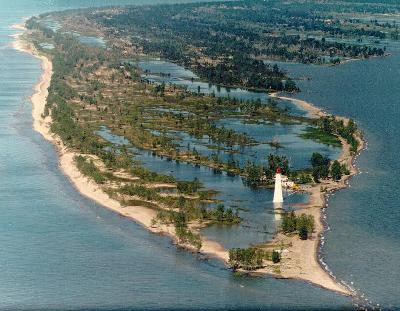

The Long Point World Biosphere Reserve's focus is to sustain Long Point and it's communities, within it's own ecosystem, and better this GRAND ENVIRONMENT. This action arises from recent United Nations studies highlighting the need to achieve balance between development and conservation. On the Long Point sand spit some 20 distinct biotic communities have been described and about 700 species of plant life have been recorded; 90species are considered to be rare in Ontario and at least four occur nowhere else in Canada. The Long Point complex is a major staging area for migrating waterfowl and small migrating birds. Over 300,000 birds of 273 different species have been banded over the past 28 years by the Long Point Bird Observatory. Long Point is the largest area of wild land remaining along the developed shores of the lower Great Lakes. Today as a result of growth in population, industrial and economic changes, increases in recreation and tourism and other activities, the Long Point ecosystem is under increasing stress and is beginning to change in ways that are not always well understood and are of increasing concern. Information is needed to understand the changing of the Long Point environment and action is to be taken to deal with the issues from the information gathered. Key management issues have evolved out of public meetings and work shops in the Long Point area. These issues are, land use change, fishing, wildlife and wetland preservation, water quality, boating and public access to coastal resources and environments. Current proposals for shore development, including marinas and residential complexes have raised concerns about effects on wetlands and impacts on aquatic environments. Further issues are erosion, flooding hazards, water use, industrial development, recreational activities and preservation of the marshes. The concerns of people from Long Point Country, have opened doors to create the Long Point World Biosphere Reserve and the Long Point Foundation. These organizations, along with the extensive research done on Long Point, by the University of Waterloo Heritage Resources Centre, through their publication of the Long Point Envirinmental Folio, have allowed us all the opportunity to focus on the issues.

